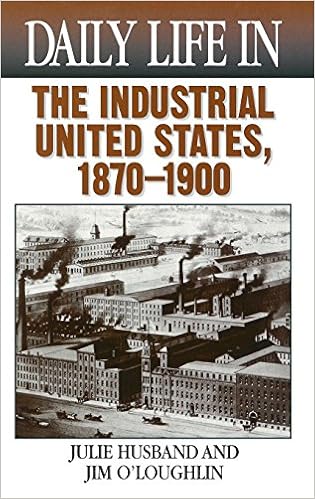Like Age of Excess this primer on the history of the last half of the nineteenth century attempts to give readers a feel for the general way of life during the period. While occasionally dropped into major historical events, this book focuses almost exclusively on daily life--and entirely on daily life among the urban classes rather than the rural. It also seemed to me quite a bit more readable. The authors seemed better able to boil life down to truisms than did Ray Ginger in Age of Excess. In part this may be because they were quite clear about delineating lines between various classes. What might be true for one class in the period was not necessarily true of another.
Still, both books work quite well in tandem. Some events not covered in Age of Excess are covered here; some events not covered here were covered in Age of Excess. A case in point would involve the discussions of popular culture. Age of Excess discusses touring play companies, worker issues among them, consolidation, and the eventual foundation for the system of live drama that exists today (too bad I don't better remember that discussion so I could go into detail here). Husband and O'Loughlin never mention the worker issues among touring companies. Instead, they devote their discussion of theater to the foundation of vaudeville, something not covered in Ray's book. Ray focuses on labor issues. Husband and O'Loughlin focus on cultural ones--the mix of "high" and "low" performances, the move toward fancier venues for performances and higher ticket prices, the accompanying drop in "low" art from the theater, and the creation of vaudeville (where entrance was cheap and performances repeated as many as twelve times a day) that once again allows that kind of mixing.
Another item covered here is the professionalization of sports, which was something I've read little about. Baseball starts as a community activity, with true "clubs" where men go to play on their leisure hours. Eventually, some entrepreneurs started selling tickets for entrance to watch. In time, better players forged traveling teams that would go to play teams of locals. Twenty years later, those teams forge a league, and professional baseball leagues are born.
The writing throughout is wonderfully clear. My one reservation with the text in the manner in which the authors chose to weave in primary materials. Boxes separate quotes illustrating points. As such, they disrupt an ongoing and interesting narrative. Often such quotes could simply have been integrated into the text proper; in other cases, they're hardly needed. But this is a quibble in an otherwise good basic reader about the era, one that seems to me more interesting than did a companion volume on the 1920s and 1930s in Greenwood Press's Daily Life series that I read a couple of years ago.
Subscribe to:
Post Comments (Atom)







No comments:
Post a Comment